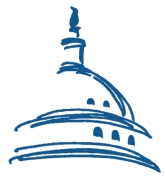 Back in February 2009 in Challenges Facing Recovery.gov and the Recovery Accountability and Transparency Board I wrote the following about making Federal stimulus spending data more accessible and “transparent” to the public:
Back in February 2009 in Challenges Facing Recovery.gov and the Recovery Accountability and Transparency Board I wrote the following about making Federal stimulus spending data more accessible and “transparent” to the public:
Whatever methods are developed to represent and report on the various processes that are involved in implementing the stimulus, they need to be understandable to professionals and to the public.
There needs to be developed a way to render the same data set in terms that are meaningful both to policy makers and to the public.
And, we need to makes sure that purely quantitative measures can be supplemented by the actual commentary provided by those affected.
The development of such measures for reporting on progress should be conducted openly as there are many interesting viewpoints that can contribute value in the process.
Finally, beware the involvement of vendors who insist on restricting access through incorporation of proprietary tools and techniques that cannot be easily copied and re-used by others.
Several of these points are borne out in the Congressional Research Service’s January 28, 2011 report The Obama Administration’s Open Government Initiative: Issues for Congress. In a long and perceptive review of the Obama Administration’s efforts to “open up” government operations and data to public scrutiny, author Wendy R. Ginsberg makes the following observation:
The Obama Administration memoranda issued on January 21, 2009, and December 8, 2009, prompt a variety of policy questions, including whether greater transparency can lead to a more efficient and effective government in a milieu of post-September 11 national security concerns. Greater public transparency and participation may lead to new ideas on how departments and agencies can cut costs and operate more efficiently. Many of the public comments and suggestions offered to date, however, have not provided viable policy options. Moreover, increased transparency and mandatory public participation requirements can slow down government operations by elongating the deliberative process. Increased participation may increase trust in the federal government while concurrently reducing the speed of government action. Additionally, increased government transparency may prompt security and privacy concerns.
Despite the use of qualifiers like “may” and “can” in the above statement, I have to agree with the author’s underlying point. We need to consider carefully whether programs for promoting “transparency” actually benefit the public. While I tend to fall on the side of transparency, given how often secrecy has been used as a tool by demagogues and repressive governments, it’s entirely appropriate to ask questions about “what works?”
In that respect I don’t think this report goes far enough. It raise serious questions but doesn’t really suggest how to answer them.
There are at least three areas that need more attention as Congress considers ways to improve governmental effectiveness and efficiency in light of our projected deficits:
- We need to do a better job of measuring the costs and benefits of transparency.
- Public collaboration can’t be improved without also improving internal collaboration.
- Collaboration is not synonymous with anarchy.
1. Measurement
The Ginsberg report reviews several attempts to assess the progress being made across different transparency programs but does not address the underlying difficulty of measuring, quantitatively, the costs and benefits of transparency. My belief is that it is irresponsible not to enter into any new program without some sense of how, at minimum, that program’s costs will be tracked. Is it any wonder that some managers of programs for making Government data more open and accessible are surprised at the effort involved? Add to that the challenges of measuring the effectiveness of collaboration and you have a recipe for surprises. Granted, we’re talking about breaking new ground here in many programs where secrecy and siloing have traditionally held sway. Still, that’s no excuse for at least trackjing — publicly — how much programs cost and asking how those costs relate to the benefits.
2. Public and Internal Collaboration
One difficulty the Obama Administration has in demonstrating clear benefits from improved transparency is that many of the thought leaders involved in the Administration’s transition and in early program formulation were drawn from environments that emphasized public communication and public engagement. This did not necessarily prepare them for the down-and-dirty bureaucratic restructuring and infighting needed to change large traditional organizations.
A key example was incorporation into Government programs of “lessons learned” from grassroots campaign use of social media. In some cases the “public engagement” side of things worked but difficulties were experienced in follow-through by Federal agency middle management.
When you open a sunlight-flooding window into a room where people have been laboring mightily for years in isolated cubicles, the benefits of that sunlight on your operations is not immediately recognized. Federal workers accustomed to layers of insulation from direct public contact might find themselves suddenly faced with a public inquiry they can’t answer on their own. If they’re not accustomed to reaching out and collaborating with other workers to answer the response, delays and dissatisfaction will result. If they don’t have the necessary infrastructure available to help them collaborate with colleagues, it’s even worse; see How Involved Should Customers Be in Managing Their Own Technical Support? for a discussion related to this.
3. Collaboration, Not Anarchy
Individuals and organizations accustomed to a highly structured or hierarchical approach to public interaction (e.g., using structured regional hearings to gauge public interest in important issues) might react negatively to uncontrolled public debate via a social network or chat group. Sometimes good and clear ideas take time to bubble to the surface. At other times the voices of naysayers and “trolls” drown out civil discourse.
Which is all true. Public discussions CAN degenerate into uncivil bouts of namecalling when exacerbated by necessary support for anonymous postings. At the same time, the opposite tack — ignoring public discussion and refusing to engage via popular social media and social networking tools — places public servants into even more serious jeopardy by remaining ignorant of what’s really going on with the public. After all, Hosni Mubarak in Egypt learned the hard way what happens when you ignore the voice of the people too long. Democracy may be messy, but equating legitimate public discourses with anarchy is even worse.
Conclusion
While I certainly support improved collaboration and transparency as necessary ingredients in a successful democracy, I also believe that the questions raised in Ginsberg’s report are entirely appropriate. We are entering into a prolonged period where many government services are necessarily going to be reduced or eliminated entirely. Not to ask tough questions about costs and effectiveness would be irresponsible. At the same time, we shouldn’t let necessary cost-cutting allow us to retreat to a time when public decisions were made behind closed doors in smoke-filled rooms.
Copyright (c) 2011 by Dennis D. McDonald


